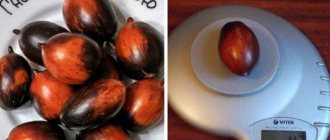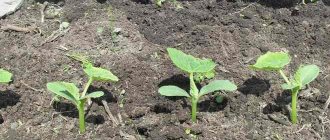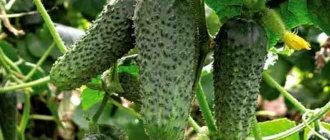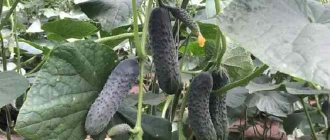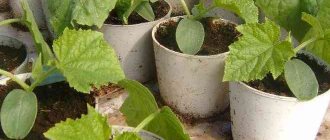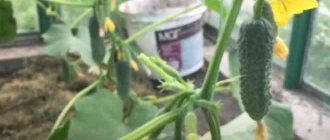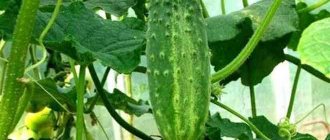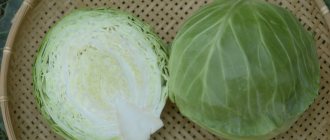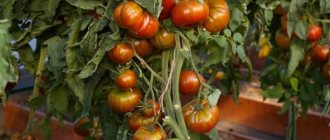Characteristic
Description with photo
Carrots of this variety have excellent appearance and taste. The bright orange root vegetables have a smooth conical shape. The surface of the carrot is smooth, the tip is rounded, and the skin is thin. Fruit length 20-25 cm, thickness 3-5 cm. Fruit weight 200-220g. The pulp is juicy, the core is thin. The leaves are powerful and dissected. The tops of this variety reach a height of 40 cm.
Read more about the photo of the Baltimore F1 variety.
What variety does it belong to?
The hybrid belongs to the “Berlicum-Nantes” variety with its characteristic blunt-nosed root crops. In length and width they are superior to the “Nantes” varieties (find out more about one of the varieties of this variety - Nantes-4 carrots).
Amount of fructose and beta carotene
The variety is famous for its valuable nutritional, dietary and healing properties. 100 g of carrots contain:
- fructose 7.0 – 7.5%;
- dry matter 11.5 – 12.5%;
- beta-carotene about 22.5 mg.
Sowing time
You need to sow from April to May. You can plant at a later date. The carrots will have time to gain weight and form the characteristic shape of the root vegetable.
To obtain an early harvest, sowing is done in late autumn.
Germination
The seeds have good germination, high yield and good taste and commercial qualities.
Average weight of one root vegetable
The weight of the root crop ranges from 0.15 to 0.25 kg, with an average of 0.2 kg.
Productivity per 1 ha
The productivity of this variety is at a high level. The yield per 1 hectare is 336 – 604 centners.
Purpose and keeping quality
The hybrid has a high yield and is therefore used both in private farms and in industrial cultivation.
Carrots of this variety are used for making juices, purees, and baby food. It is also widely used in cooking and has proven itself well in freezing and canning. The crop can withstand long-term transportation and has excellent keeping quality. If the specified temperature and humidity are maintained, it can be stored until a new harvest. The variety is intended for long-term storage.
Cultivation regions
The Baltimore F1 carrot variety is grown in the following areas:
- Central.
- Central Black Earth District.
- Northwestern.
- West Siberian.
- East Siberian.
- Far Eastern.
- Volgo-Vyatsky.
- Nizhnevolzhsky and Uralsky.
Higher yields were achieved in the Central region of Russia. This variety is also popular in Belarus, Moldova and Ukraine.
Selecting a location
Baltimore F1 can be grown in any garden plot, provided there is loose soil and no shade. But carrots can be grown not only in open ground, but also in greenhouses. The positive aspects of such cultivation will be earlier ripening than in open ground. The greenhouse should be in a sunny place and well ventilated.
Resistance to diseases and pests
Carrots of this variety have good resistance to diseases and pests. The foliage is highly resistant to fungal diseases and powdery mildew, and the root crop is poorly resistant to nematodes, which can significantly reduce the yield.
Carrots are most often affected by dry, white and gray rot. To avoid these diseases, potassium and nitrogen fertilizers are added to the soil and the leaves are treated with Bordeaux mixture. The pest includes the carrot fly. Its larvae develop in the soil and infect root crops. Such drugs as Actellik, Decis Profi and Arrivo fight it well.
Ripening period
Belongs to varieties of medium ripening. From the moment the sprouts appear until the harvest, about 100 days pass. The variety is suitable for the production of early bunched products, for which 90 days are sufficient. You may be interested in learning about the ripening times of other carrot varieties.
The soil
Refers to unpretentious and undemanding. Light, well-drained and fertile soils such as loams are suitable for its cultivation. If the soil is rough and not loose, it is lightened by adding sand, peat, and sawdust.
Frost resistance
It has excellent frost resistance and tolerates cold well. If the required temperature and humidity are maintained, it can be stored until a new harvest. Suitable for many regions of Russia.
Baltimore F1, unlike other varieties, is excellent for winter sowing.
- Seeds are sown in mid-November, the furrows are covered with dry soil.
- The top of the bed is covered with peat or humus.
- When snow falls over the bed, a snowball is formed to prevent hypothermia of the seeds.
Growing carrots Solomon F1
Among late-ripening varieties, gardeners highlight Solomon f1 carrots. It gained popularity thanks to its large fruits. The crop is excellent for harvesting for the winter, has a good taste and presentable appearance.
Growing carrots Solomon F1
Characteristics of the variety
The yield of the Solomon hybrid is 229-416 kg per 1 ha. It is suitable for industrial cultivation.
Description of the bushes
The rosette of leaves is semi-spreading. The leaf blades are medium-sized, elongated, coarsely dissected. The color is dark green.
Description of fruits
The shape is cylindrical, the tip is slightly pointed. The fruits are leveled. The skin color is intense orange. The color inside is the same. The root vegetable is juicy and sweet. Suitable for fresh consumption, canning, freezing and growing for bunched products.
It has the following composition per 100 g of fresh product:
- dry matter - 12.3-15.7%;
- sugar - 7.2-8.7%;
- carotene - up to 16.4 mg.
According to the description, the Solomon f1 variety has the following positive qualities:
- high taste characteristics;
- yield of marketable products 68-91%;
- hearth size;
- excellent keeping quality: carrots are stored until the end of spring.
Growing
Growing is no different from other varieties
Planting time in the ground is May 7-8. Planting carrots later will result in slower plant development.
The best precursors for the crop are corn, cabbage, beets, and tomatoes. Carrots prefer light, loose, well-structured soil. It has been prepared since autumn. The acidity should be neutral or weak. High pH levels are neutralized by adding lime to the soil (300-400 g per 1 sq. m). To improve the soil, sand and humus are added to it (3-4 kg per 1 sq. m). The root crop does not accept fresh manure. In spring, the soil is loosened with a rake.
To increase the germination of seeds, they are prepared before planting. To do this, the following procedures are performed:
- Disinfection. The grains are placed in a solution of potassium permanganate for 15-20 minutes, then removed and washed.
- Warming up. The seed is soaked in warm water (50°C) for 20 minutes.
- Nutrient saturation. The seeds are treated with growth stimulants. They are placed in a solution of the drug “Epin” for a day.
Disembarkation
The bed must be moist. Carrots of the Solomon f1 variety are planted in furrows, which are made at a distance of 18-20 cm. The seeds are distributed evenly. Their planting depth is 0.5-2 cm, depending on the soil. Seeding rate - 0.4-0.6 g per 1 square. m. The grains are sprinkled with earth and lightly compacted. Watering is carried out using the sprinkling method.
About 2 weeks after germination, when 1-2 leaves appear, the carrots are thinned out. The second thinning is carried out 3 weeks after the previous one. Plants respond well to loosening the soil. At the same time, weeding is carried out.
Fertilizer
Fertilizers are applied by the root method after abundant watering. Nitrogen-containing products are used to grow tops. In the 3-sheet phase, use ammonium nitrate (30 g per 10 liters of water) or organic matter:
- infusion of bird droppings;
- slurry;
- fermented infusion of nettles and weeds.
Then the plants are provided with potassium and phosphorus.
Watering
Both excess and lack of water are harmful to the culture. In hot weather, plants are watered every 4-5 days. In rainy weather, excess liquid is drained from the beds. Before emergence and when the plants are small, the soil is kept constantly moist. When the root crop reaches normal size, stop watering. To retain water, the ground is mulched.
Diseases and pests
Preventing carrots from becoming infected
Carrots are affected by various fungal diseases:
- anthracnose;
- gray rot;
- brown spot;
- Phomasis;
- cercosporiosis.
To combat diseases, systemic fungicides are used. Plants are treated with Oksikhom, Fundazol, Falcon or 1% Bordeaux mixture. Affected root crops are pulled out.
Various insects can also harm the crop:
An infusion of tobacco and onion peel also helps well. Dust with ash or ground black pepper.
To prevent diseases, the following preventive measures are taken:
- observe crop rotation;
- disinfect seeds;
- provide the plantings with proper care;
- collect plant residues from the garden beds;
- treat vegetables with 1% Bordeaux mixture.
History of breeding
The Baltimore F1 carrot variety was bred by the Dutch breeding company Bejo. This hybrid is part of the numerous Berlicum/Nantes varietal group. The selection was carried out on the basis of the Nandrin F1 variety, well known among farmers.
Biologists changed the parent variety, crossing it with other varieties, improving its qualities and increasing the resistance of the tops to diseases. The resulting hybrid has excellent taste. It has found wide application in cooking and in the preparation of juices for baby and dietary foods.
Variety Baltimore F1 is a first generation hybrid. The seeds obtained from it (second generation) will give a lower yield of carrots. Therefore, seeds must be purchased from the manufacturer.
Growing
Carrots of the Baltimore F1 variety are planted in early spring or before winter. For planting seeds, choose loose and well-drained soil. Lighten the soil by adding sand, peat or sawdust. The landing site should be sunny. To sow seeds, make beds 20-25 cm high, such that the thickness of the soil layer exceeds the length of the root crop.
The seeds of this variety are planted in rows spaced 20 cm apart from each other. The depth of the groove is 2-3 cm, the distance between the seeds is 4 cm. The soil needs regular loosening.
Thin out 2 times:
- 2 weeks after emergence;
- then after another 10 days.
The Baltimore F1 variety does not require fertilizing during the growing season.
My opinion
Having purchased the seeds of this variety of carrots, I was very pleased. And “Baltimore” took its place of honor among my favorite varieties. The shoots appeared quickly enough and began to grow together. Apart from regular watering, thinning and weeding, the plant did not require any trouble. No repeated fertilizing or chemical treatments for pests were required.
And when the harvest time came, I was pleasantly surprised. All root vegetables were even, smooth with a bright orange skin. The carrots did not crack, there were no crooked, ugly fruits. The size of the root crops varied, but there were no very small specimens. Medium and large fruits. The root vegetables tasted incredibly sweet and juicy, it was even a pity to use it for cooking. I wanted to eat it only fresh. The peel is so thin that you don’t even need to peel it off with a knife, you just need to wash it thoroughly, and the core is not wide and without the bitterness inherent in other varieties. Overall, I was very pleased with this carrot variety, and now it is an annual guest on my site.
Collection and storage
- Before harvesting ripened root crops, the area is watered. Moistening the soil makes it easier to remove the carrots to the surface. The varietal feature of Baltimore F1 is its strong, tall tops; harvesting is carried out mechanically.
- The carrot harvest is dried for several days and then sorted. Damaged vegetables are removed to avoid subsequent contamination of other root vegetables. The tops are completely removed.
- The next step is to transfer the carrots to a room where the temperature is maintained from -2 to +2 degrees and the air humidity is 90-95%.
Problems during cultivation and ways to solve them
Improper cultivation of carrots leads to disease and death of the entire crop.
To prevent the appearance of rot on root crops, you must adhere to the following rules:
- Do not plant in cold and damp weather;
- apply fertilizers in sufficient quantities;
- harvest in rainy weather;
- Avoid high humidity in the storage area.
In areas where carrot fruits have been affected by mycosis, next year, before sowing seed material, measures must be taken to prevent the proliferation of mycotic spores:
- perform pre-sowing treatment of seed material;
- deoxidize the soil;
- observe agrotechnical measures for changing sown areas;
- thin out crops on time;
- avoid nitrogen fertilizing;
- In anticipation of harvesting root crops, treat carrots with Bordeaux.
Similar varieties
There are several varieties of carrots that are similar to Baltimore F1. These include varieties:
- Artek.
- Canning.
- Nandrin F1.
- Napoli F1.
- Nelly F1.
- Lydia F1.
- Belladonna.
- Touchon and Chocolate Bunny.
All these varieties are early ripening. The color of the root vegetable is orange-red, the shape of the fruit is cylindrical with a rounded end. The core is thin, the pulp is juicy, the tops are strong. The varieties are resistant to cracking.
We also suggest reading about such carrot varieties as Vitamin 6, Karotel, Sentyabrina, Imperator, NIIOH 336, Moscow Winter, Shantanay, Canada, Amsterdam and Red Cor. This will help you grow a good harvest in your garden.
The Baltimore variety is unpretentious, produces high yields in a short time, and is suitable for long-term storage. It is in high demand among farmers. The high quality of carrots allows us to say that the Dutch variety Baltimore F1 is one of the best.
Review: Carrot seeds Euroseeds “Baltimore F-1” – Lots of ugly fruits.
Good day to the readers of my review! There is very little time left before the onset of the summer season, summer residents are already beginning to rustle bags of seeds, revise and make a shopping list. This review is to help so as not to be disappointed with the result and not waste space on the beds and waste energy on growing. When choosing carrot seeds, I have two criteria for evaluating the shape and taste of the vegetables. And of course, the bright orange color is also attractive, indicating a high carotene content, but maybe this is a misconception. The package with seeds of the Euroseeds brand “Baltimore F-1” fully met my requirements and even had medals from the Siberian Fair and was classified as a gold collection. The manufacturer also advertises a high content of nutrients and excellent taste.
On the back is a description of the characteristics, recommendations for planting, information about the manufacturer, expiration date and number of seeds.
The seeds were in a transparent package, through which you can see that they are encrusted, that is, covered with a shell that contains agents against diseases and pests, as well as fertilizers and growth stimulants.
I planted them in the ground in the first ten days of May according to my usual method. I made furrows throughout the entire bed, poured plenty of water into them from a watering can, and then sowed the seeds. I covered it with soil and covered it with plastic wrap for a week to better retain moisture, quickly germinate and preserve seeds from birds. Often it is the feathered friends of gardens that feed on the garden beds not only on worms, but also on seeds, and we are guilty of poor germination. But despite good care, this variety disappointed me with its harvest. Even the tops were liquid and two times lower than those of the second variety growing nearby. I had two varieties growing in my garden bed; I always do this to be on the safe side. The growing conditions were the same, but the results varied greatly. A lot, or rather half of the harvest had this clumsy shape, which does not suit any gardener and is thrown away, since cleaning it is a problem.
How to peel such twisted carrots and is it worth it?
Trying to find the answer to the question why carrots grow clumsy, I read a lot of information that mainly complained about poor care and tillage. I completely disagree with this opinion, because on the same bed with the same conditions, I got an excellent harvest of Seeds Agros “Carrot Abledo F1” and a poor quality result from this variety. And the pale color is not at all typical for carrots, which contain a lot of carotene. I do not recommend these seeds if you are trying to grow even fruit.
